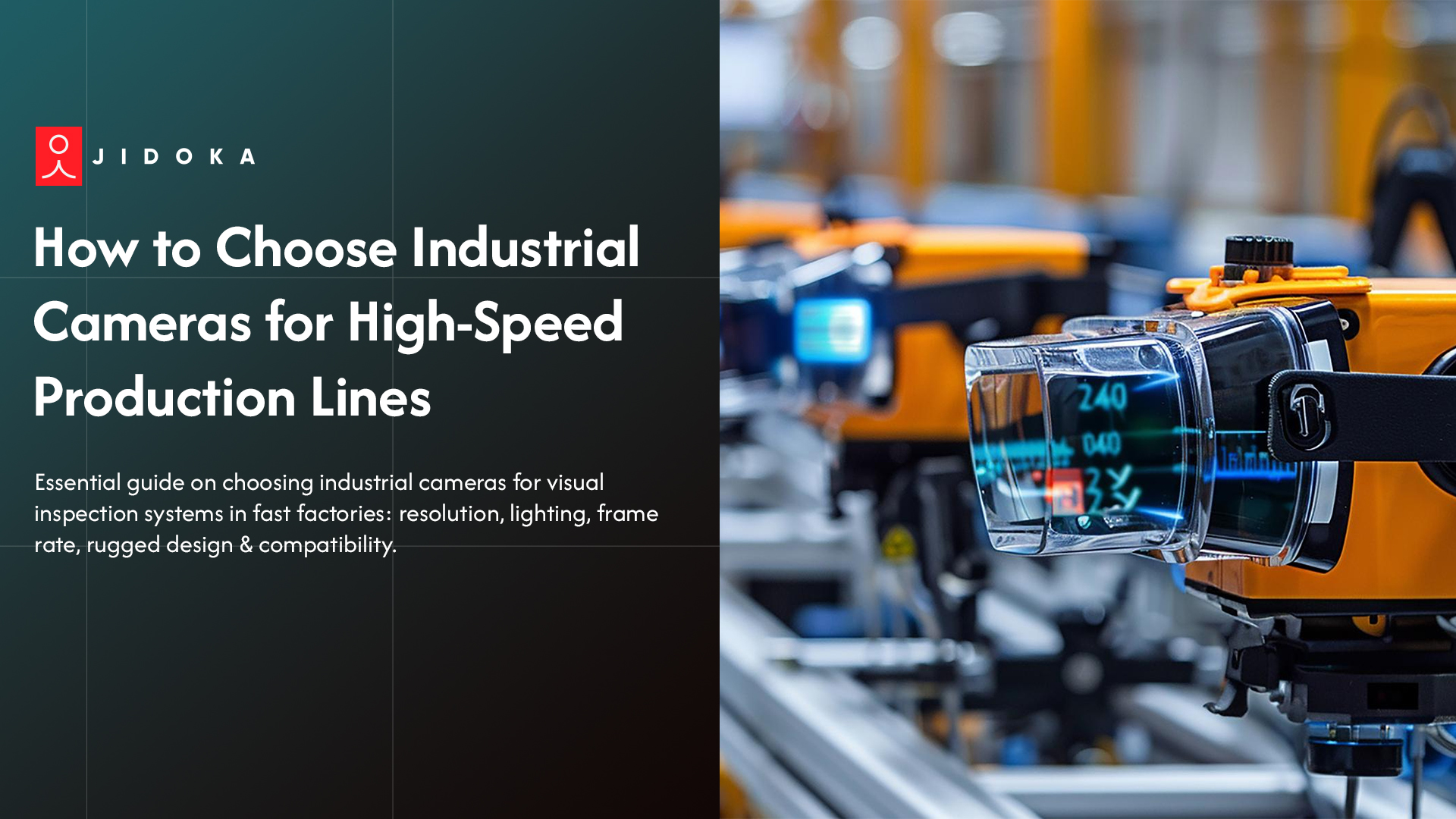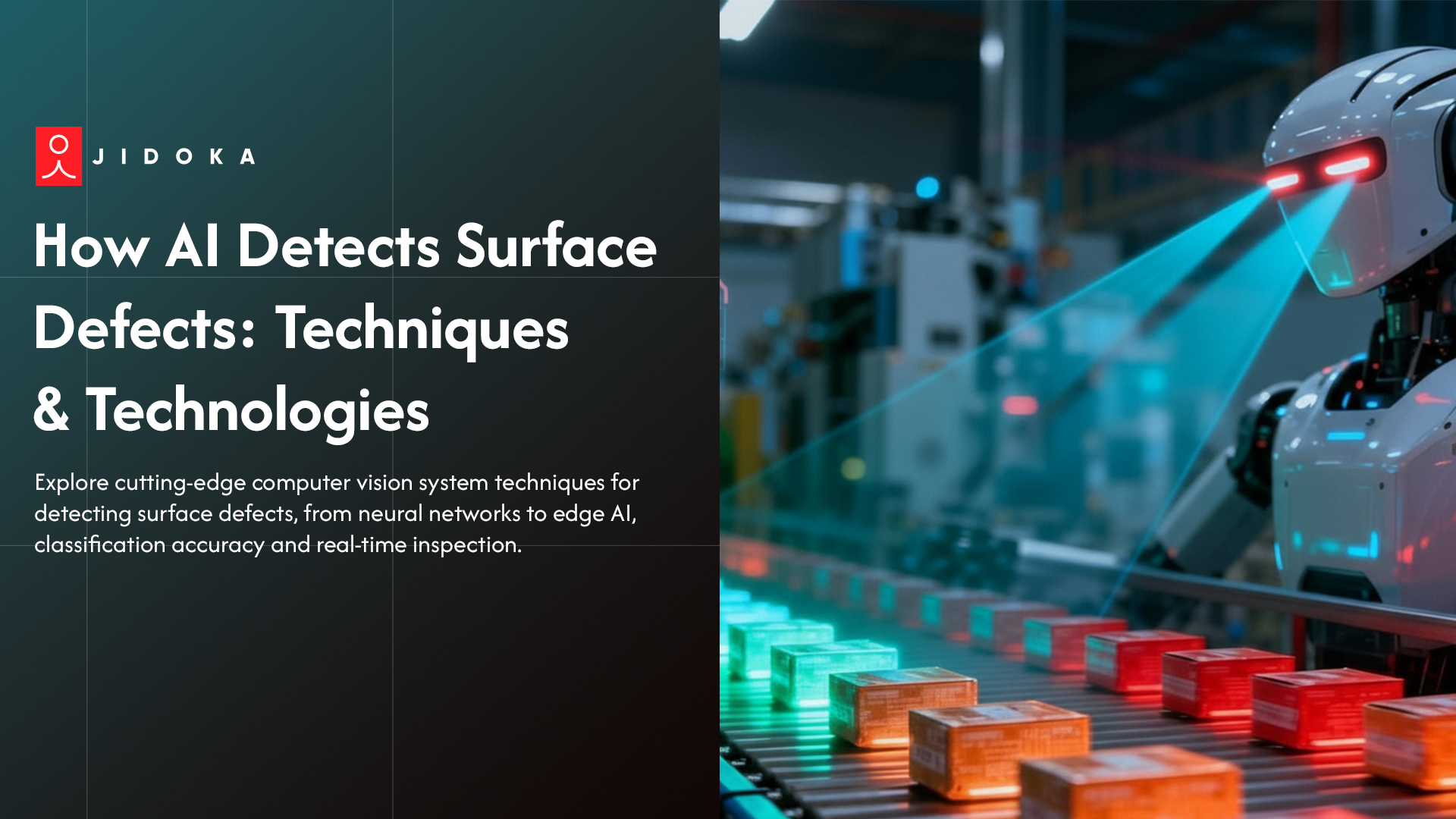Your manual inspectors are overwhelmed. Scrap rates are creeping up. You know you need automated quality control. The machine vision systems market is growing. Buying a visual inspection machine in 2025 is a complex decision.
Today's systems offer different brains, from traditional rule-based logic to new AI-powered models. These AI models are built for tough jobs like surface anomaly detection. You might need inline inspection or another setup.
Choosing the wrong visual inspection machine is a multi-thousand-dollar mistake. This guide is a framework, not a catalog. We built it to help you pick the right system for your production line QC.
Question #1: Are You Hunting a "Predictable" or "Unpredictable" Defect? (AI vs. Rule-Based)
This is the single biggest question you will answer. It determines the "brain" of your entire visual inspection machine. Your choice here dictates how your system finds flaws.
A) The "Rule-Based" Machine: The Logic-Based Specialist
What it's for: This machine finds predictable, measurable, binary flaws. Think: "Is the logo present? Yes/No." "Is the fill level between Line A and Line B?" or "Is the hole drilled?"
How it works: A programmer must write specific "if-then" rules for every single defect you want to find. This type of visual inspection machine measures pixels, angles, and contrast to find a match or a failure.
The Pro: It is extremely fast and precise for simple, repetitive tasks.
The Con: It is completely blind to any defect you don't explicitly program. It fails with cosmetic flaws like scratches, glue-stringing, or subtle texture variations. This often leads to a high "false positive" rate.
B) The "AI-Powered" Machine: The Deep Learning Generalist
What it's for: This machine finds complex, unpredictable, or aesthetic flaws. This is your solution for surface anomaly detection and tough manufacturing defect detection.
How it works: You do not program "rules." You train it. You show the AI visual inspection system 20-50 images of "good" products. It learns what "perfect" looks like. This deep learning quality control method can then instantly flag any deviation, even if it's a blemish it has never seen before.
The Pro: This modern visual inspection machine finds defects a human would. It drastically cuts false positives and can be trained in hours.
The Con: It requires a small set of good training images to get started.
Once you've decided on the "brain" for your visual inspection machine, the next step is to choose its "eyes."
Question #2: Is Your Defect "Flat" or "3D"? (2D vs. 3D Inspection)
You have picked the "brain" for your visual inspection machine. Now you need to choose its "eyes." This decision of 2D vs 3D inspection determines how your system sees the part and is a big step in choosing a vision system.
A) 2D Visual Inspection: The High-Speed "Photograph"
What it's for: This system is for "flat" problems. Think about checking a label for print errors, verifying a barcode, or finding a simple scratch. This is the core of most automated optical inspection and is often used for surface anomaly detection on flat parts.
How it works: This visual inspection machine takes a single, flat 2D image. Its speed makes it a common choice for inline inspection. It analyzes that image for contrast and patterns to find defects.
The Limit: It has no depth perception. It cannot tell if a bottle cap is skewed. This visual inspection machine cannot measure the volume of a solder joint or the depth of a scratch.
B) 3D Visual Inspection: The "Depth Perception" Pro
What it's for: This system handles shape, volume, and depth problems. Use it to answer: "Is this cap cross-threaded?" "Is the gasket seated properly?" or "Is the pin bent?"
How it works: It uses technologies like lasers or structured light to build a 3D point-cloud of the object. It measures X, Y, and most importantly Z (height).
The Limit: A 3D visual inspection machine is typically more expensive. It can also be slower than a 2D system, which can be a factor for high-speed inline inspection. It solves problems that are physically impossible for a 2D camera to see.
Knowing your system's brain and eyes is great, but now you must decide where your visual inspection machine will live.
Question #3: Do You Need to "Stop the Line" or "Check the Batch"? (Inline vs. Offline)
You know the 'brain' and 'eyes'. Finally, where does your visual inspection machine live? This decision about its location dictates your entire automated quality control strategy.
A) The "Offline" Station: Your QC Lab Powerhouse
This is a standalone visual inspection machine. An operator brings a sample of parts to it for a highly detailed check. This setup is perfect for first-article inspection or deep-dive diagnostics on a part. It is a great tool for auditing, but it is not a full production line QC solution.
B) The "Inline Inspection" System: Your 100% Production Guardian
This is the true workhorse for your production line QC. The inline inspection system is mounted directly on your production line. This visual inspection machine inspects 100% of your products at full speed. This is the only way to achieve real-time, 100% automated quality control. It can instantly stop a bad run, even for difficult surface anomaly detection tasks.
A system's brain, eyes, and location are the main parts. But a visual inspection machine that can't communicate is just a very expensive camera.
A Machine That Can't "Talk" is a Useless Machine
Your new visual inspection machine must be a "team player." Before you buy, ask about its vision system integration. In 2025, a simple "Pass/Fail" signal is not enough. You need a visual inspection machine that can send rich data, like defect images and trend reports, to your MES or SCADA system for traceability.
Most importantly, it must communicate directly with your line's PLC (Programmable Logic Controller). This vision system integration is what allows the visual inspection machine to trigger a reject kicker, stop the conveyor, or alert an operator. This is how you turn raw data from your automated quality control into an action.
How Jidoka Tech Helps You Choose the Right Visual Inspection Machine
Jidoka focuses on solving your specific defect. We don't sell one-size-fits-all cameras. With 48+ Trusted Customers Worldwide and 100+ Successful Implementations, we analyze your U.S. production line to build the right visual inspection machine for your problem.
Our solutions provide:
- AI-Powered Inspection: We use AI visual inspection to find complex defects. This includes surface anomaly detection that rule-based systems miss.
- Turnkey Inline Inspection: We build complete, high-speed inline inspection systems that integrate directly into your line.
- Seamless Integration: Our machine vision systems connect to your existing PLCs and MES for 100% automated quality control.
We can provide a complete visual inspection machine to check 1,200 parts per minute. We can also build systems to find tiny cosmetic flaws.
Contact us to discuss your specific defect → Jidoka
Conclusion
Choosing a vision system is a major challenge. The biggest pain is buying the wrong visual inspection machine. You might get a 2D system when you really need to analyze a 3D problem. Or, you get a rule-based system that drowns your production line QC in false positives.
This mistake is costly. Your visual inspection machine fails. You keep scrapping good parts. Worse, you ship bad parts with surface anomaly detection issues to your customers. Your automated quality control fails, and your reputation is on the line with every bad batch.
At Jidoka, we prevent this. We start by analyzing your specific manufacturing defect detection problem. We design the right visual inspection machine for the job, using AI visual inspection and deep learning quality control to ensure your inline inspection system finds the real flaws.
Connect to Jidoka today to stop guessing and get the right visual inspection machine for your automated quality control.
FAQs
1. What's the main difference between AI and traditional visual inspection?
A traditional visual inspection machine needs a human to program "if-then" rules for every single flaw. An AI visual inspection system is different. It uses deep learning quality control to learn what a "good" part looks like, allowing this advanced visual inspection machine to find any defect, even new ones.
2. When do I absolutely need a 3D visual inspection machine?
You absolutely need a 3D system when your defect involves height, depth, or volume. A flat 2D visual inspection machine can't measure a skewed cap or glue bead. This is the main decider in 2D vs 3D inspection and a critical step in choosing a vision system for complex assembly tasks.
3. What is "inline inspection"?
Inline inspection integrates your visual inspection machine directly into the production line. It is the ultimate automated quality control solution, checking 100% of products at full speed. This is how you achieve real-time production line QC and prevent bad parts from ever leaving the factory.
4 How does AI help with surface anomaly detection?
AI visual inspection is perfect for surface anomaly detection. It uses deep learning quality control to find unpredictable flaws like scratches, dents, or stains. Traditional machine vision systems can't handle this. An AI visual inspection system simply learns the "good" part and flags any deviation.
5. Is it difficult to "train" an AI visual inspection system?
No, it's surprisingly fast. Modern deep learning quality control allows an AI visual inspection system to be trained in hours, not weeks. Your own engineers can train the visual inspection machine using just a small set of "good" product images, getting your automated quality control running quickly.
%20Which%20Visual%20Inspection%20Machine%20to%20Get%20in%202025_.jpg)







